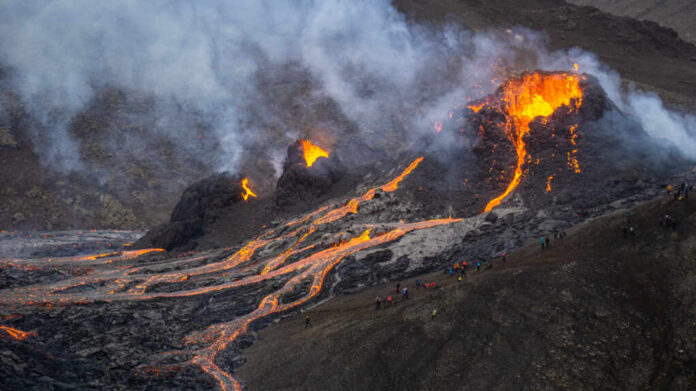
Iceland chose to evacuate its residents of the fishing town Grindavik on Saturday as concerns over a possible volcanic eruption continued to mount. Grindavik, which lies about 31 miles southwest of Iceland’s capital Reykjavik, has seen an increase in small earthquakes every day for two weeks.
However, evacuation of Grindavik wasn’t considered until Iceland’s Meteorological Office discovered a corridor of magma that now lies under the community. Thanks to the ongoing seismic activity in the region, this semi-molten rock currently extends under Grindavik.
This discovery led the police to evacuate the town of 3,400. Civil defense authorities also declared a state of emergency in the region as volcanic eruption worries grow.
Iceland’s Meteorological Office released a statement explaining that the “likelihood of a volcanic eruption occurring in the near future is deemed considerable.”
Authorities have also decided to raise their aviation alert to orange in the region. Volcanic eruptions can be incredibly detrimental to aviation, as ash can be spewed high up into the atmosphere, thereby putting all flights in danger.
Concern about a potential eruption has only continued to grow in the past two weeks. Scientists have kept an eye on the continuous seismic activity in the area as seismic activity escalated. After a magnitude 4.8 earthquake hit the region, the popular geothermal tourist resort Blue Lagoon was temporarily closed. The evacuation of Grindavik soon followed.
Significant likelihood of a volcanic eruption in the coming days. Models show a 15-km long magma intrusion, located just northwest of Grindavík. A hazard area has been defined based on the location of the dike, as shown in the map. https://t.co/9vYBBjNcX9 pic.twitter.com/m6SyMVkmer
— Veðurstofa Íslands / Icelandic Met Office (@Vedurstofan) November 11, 2023
The Iceland Meteorological Office also continues to monitor the buildup of magma underground, which is currently about 3.1 miles beneath the surface. The magma corridor itself is about 6.2 miles long. This corridor continues to spread and move further to the sea, which is how it came to move underneath the town of Grindavik.
However, the seismic activity didn’t originate in Grindavik. Scientists first noticed activity north of the fishing town near a network of 2,000-year-old craters. According to geology professor Pall Einarsson, the biggest earthquakes in the region began under these old craters.
Professor Einarsson also stated that it appears that the corridor is continuing to move along to the sea. As this magma corridor continues to move along, officials believe that magma might reach the surface.
However, it currently isn’t possible for authorities to determine just when — or where — this may happen.














